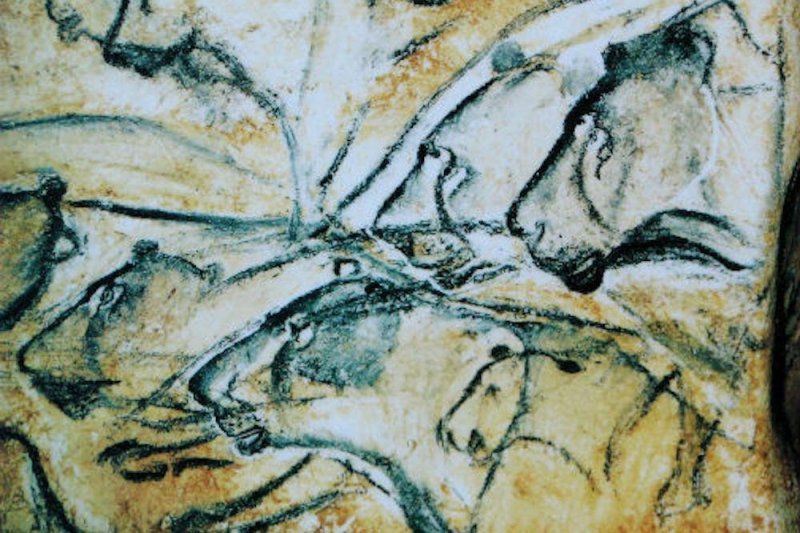AGXStarseed
Well-Known Member
(Not written by me)
Researchers argue early humans with autistic traits 30,000 years ago may be responsible for a variety of innovations.

The Chauvet Cave in Southern France is home to 30,000-year-old drawings of lions. Around the same time, detailed animal paintings began to proliferate in ice age caves. Photo by Wikimedia Commons
May 14 (UPI) -- Some 30,000 years ago, in the midst of the Ice Age, cartoonish caricatures of animals gave way to more realistic art. New research suggests the shift in aesthetic could be explained by "detail focus," a trait linked to autism.
Seemingly all at once, detailed depictions of bears, bison, horses and lions began to appear in significant numbers in Ice Age caves. Scientists have struggled to account for the sudden change.
Researchers have previously suggested psychotropic substances inspired the explosion of detail-oriented drawings, but a new study discounts such an explanation.
Instead, archaeologists at the University of York argue a trait linked with autism, called detail focus, jumpstarted the trend.
"Detail focus is what determines whether you can draw realistically; you need it in order to be a talented realistic artist," York archaeologist and lead researcher Penny Spikins said in a news release. "This trait is found very commonly in people with autism and rarely occurs in people without it."
Spikins and her colleagues detailed the link between detail focus and realistic cave painting in the journal Open Archaeology.
"We looked at the evidence from studies attempting to identify a link between artistic talent and drug use, and found that drugs can only serve to dis-inhibit individuals with a pre-existing ability," Spikins said. "The idea that people with a high degree of detail focus, many of which may have had autism, set a trend for extreme realism in ice age art is a more convincing explanation."
Researchers argue early humans with autistic traits may be responsible for a variety of innovations.
"As well as contributing to early culture, people with the attention to detail needed to paint realistic art would also have had the focus to create complex tools from materials such as bone, rock and wood," Spikins said. "These skills became increasingly important in enabling us to adapt to the harsh environments we encountered in Europe."
Previous research efforts have highlighted commonalities between cave art and art made by modern humans with autism. While other studies have shown key autism genes can be traced to our ape ancestors.
Related: How our ancestors with autistic traits led a revolution in Ice Age art: The ability to focus on detail, a common trait among people with autism, allowed realism to flourish in Ice Age art
Source: Trait tied to autism may explain emergence of realistic art
Researchers argue early humans with autistic traits 30,000 years ago may be responsible for a variety of innovations.

The Chauvet Cave in Southern France is home to 30,000-year-old drawings of lions. Around the same time, detailed animal paintings began to proliferate in ice age caves. Photo by Wikimedia Commons
May 14 (UPI) -- Some 30,000 years ago, in the midst of the Ice Age, cartoonish caricatures of animals gave way to more realistic art. New research suggests the shift in aesthetic could be explained by "detail focus," a trait linked to autism.
Seemingly all at once, detailed depictions of bears, bison, horses and lions began to appear in significant numbers in Ice Age caves. Scientists have struggled to account for the sudden change.
Researchers have previously suggested psychotropic substances inspired the explosion of detail-oriented drawings, but a new study discounts such an explanation.
Instead, archaeologists at the University of York argue a trait linked with autism, called detail focus, jumpstarted the trend.
"Detail focus is what determines whether you can draw realistically; you need it in order to be a talented realistic artist," York archaeologist and lead researcher Penny Spikins said in a news release. "This trait is found very commonly in people with autism and rarely occurs in people without it."
Spikins and her colleagues detailed the link between detail focus and realistic cave painting in the journal Open Archaeology.
"We looked at the evidence from studies attempting to identify a link between artistic talent and drug use, and found that drugs can only serve to dis-inhibit individuals with a pre-existing ability," Spikins said. "The idea that people with a high degree of detail focus, many of which may have had autism, set a trend for extreme realism in ice age art is a more convincing explanation."
Researchers argue early humans with autistic traits may be responsible for a variety of innovations.
"As well as contributing to early culture, people with the attention to detail needed to paint realistic art would also have had the focus to create complex tools from materials such as bone, rock and wood," Spikins said. "These skills became increasingly important in enabling us to adapt to the harsh environments we encountered in Europe."
Previous research efforts have highlighted commonalities between cave art and art made by modern humans with autism. While other studies have shown key autism genes can be traced to our ape ancestors.
Related: How our ancestors with autistic traits led a revolution in Ice Age art: The ability to focus on detail, a common trait among people with autism, allowed realism to flourish in Ice Age art
Source: Trait tied to autism may explain emergence of realistic art